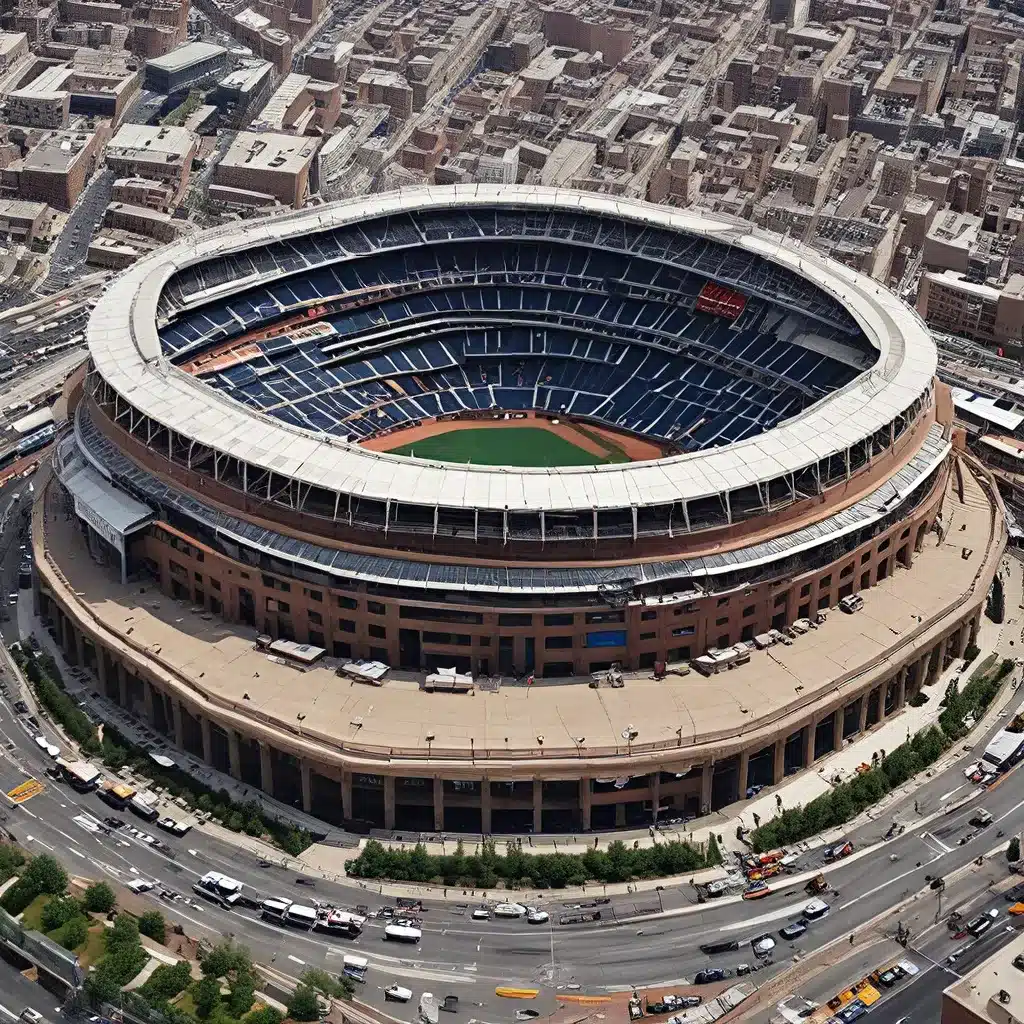
The Birthplace of Beatlemania and Beyond
In the annals of music history, Shea Stadium stands as a hallowed ground, a venue that witnessed the birth of a cultural phenomenon. On August 15, 1965, the world-renowned Beatles graced the stadium’s stage, unleashing a frenzy of Beatlemania that would reverberate for generations to come.
The arrival of the Fab Four in New York City on February 7, 1964, marked a pivotal moment in American cultural history. As their plane touched down, thousands of screaming fans gathered at the airport, the news coverage unparalleled. The Beatles’ appearance on The Ed Sullivan Show, watched by an estimated 73 million viewers, further fueled their meteoric rise to international stardom. Their subsequent concert tours across the United States, including their legendary performances at Shea Stadium in 1965 and Dodger Stadium in 1966, cemented their status as cultural icons.
Beyond the realm of music, Shea Stadium’s legacy extends far beyond the realm of music. The stadium’s rich history has been woven into the fabric of American culture, serving as a stage for moments that transcend the sport of baseball. During the turbulent times of the Civil Rights movement, Jackie Robinson’s integration of the game paved the way for progress, inspiring leaders like Martin Luther King Jr. who credited Robinson’s success for making his own dreams possible. The stadium also played a pivotal role in the healing process following the tragic events of 9/11, as the Mets’ Mike Piazza hit a game-winning home run that provided a much-needed sense of hope and resilience.
The Evolution of Shea Stadium
Shea Stadium, named after William A. Shea, the lawyer who brought National League baseball back to New York City, opened its doors in 1964. The stadium served as the home of the New York Mets for over four decades, a tenure that spanned some of the most iconic moments in the team’s history.
The stadium’s design was a significant departure from the traditional baseball stadiums of the era. Architect Emil Praeger’s vision for Shea Stadium incorporated a circular, multi-purpose layout that allowed it to host a variety of events beyond just baseball, including concerts, football games, and even religious gatherings. This innovative approach reflected the stadium’s role as a hub of community and culture, rather than just a sports venue.
Over the years, Shea Stadium underwent several renovations and expansions to keep up with the changing needs of the Mets and their fans. In the early 1980s, the stadium’s seating capacity was increased to over 55,000, making it one of the largest venues in the National League. The iconic circular design, with its distinctive blue outfield walls and neon-lit scoreboard, became a beloved symbol of the Mets’ identity and the vibrant energy of New York City.
Memorable Moments at Shea Stadium
Shea Stadium’s legacy is marked by a tapestry of unforgettable moments that have cemented its place in the annals of sports and entertainment history. From the electrifying performances of the Beatles to the heroic achievements of the Mets, the stadium has served as a stage for some of the most iconic and memorable events in American culture.
One of the most significant moments in Shea Stadium’s history was the Mets’ improbable World Series victory in 1969. The “Miracle Mets,” as they were affectionately known, stunned the baseball world by defeating the heavily favored Baltimore Orioles. The team’s underdog triumph, celebrated by a raucous crowd at Shea Stadium, became a symbol of the resilience and determination of New Yorkers during a tumultuous time in the city’s history.
The stadium also played host to a number of legendary baseball players, including Tom Seaver, Dwight Gooden, and Mike Piazza, who etched their names in the Mets’ record books with standout performances. Seaver’s dominant pitching, Gooden’s electrifying no-hitter, and Piazza’s game-winning home run in the aftermath of 9/11 are just a few of the countless moments that have cemented Shea Stadium’s status as a hallowed ground for sports fans.
The End of an Era
In 2008, Shea Stadium closed its doors for the final time, as the Mets moved to their new home, Citi Field. The demolition of the iconic stadium sparked a wave of nostalgia and reflection among fans, who mourned the loss of a cherished piece of New York City’s history.
Despite the stadium’s closure, Shea Stadium’s legacy lives on through the countless memories and experiences it has provided to generations of fans. The stadium’s unique design, its role in fostering community and cultural events, and its association with some of the most iconic moments in sports and music history have cemented its place as a beloved and enduring symbol of the city.
As the world continues to evolve, the memory of Shea Stadium and the experiences it fostered serve as a reminder of the power of sports and entertainment to bring people together, transcend boundaries, and create lasting, impactful moments. Its legacy lives on, not just in the physical artifacts and memorabilia it has left behind, but in the indelible mark it has left on the hearts and minds of all who have had the privilege of experiencing its magic.
Exploring the Old Stadium Journey
For those captivated by the rich history and enduring legacy of Shea Stadium, the Old Stadium Journey website offers a unique opportunity to delve deeper into the stories and memories that have shaped this iconic venue. Through immersive articles, interactive features, and a wealth of historical information, visitors can embark on a journey that celebrates the timeless allure of Shea Stadium and its impact on American culture.
Whether you’re a lifelong Mets fan, a music enthusiast, or simply someone captivated by the intersection of sports, entertainment, and history, the Old Stadium Journey provides a comprehensive and engaging exploration of Shea Stadium’s enduring legacy. Discover the stories, relive the moments, and connect with the rich tapestry of experiences that have made Shea Stadium a beloved and enduring icon in the annals of American history.

